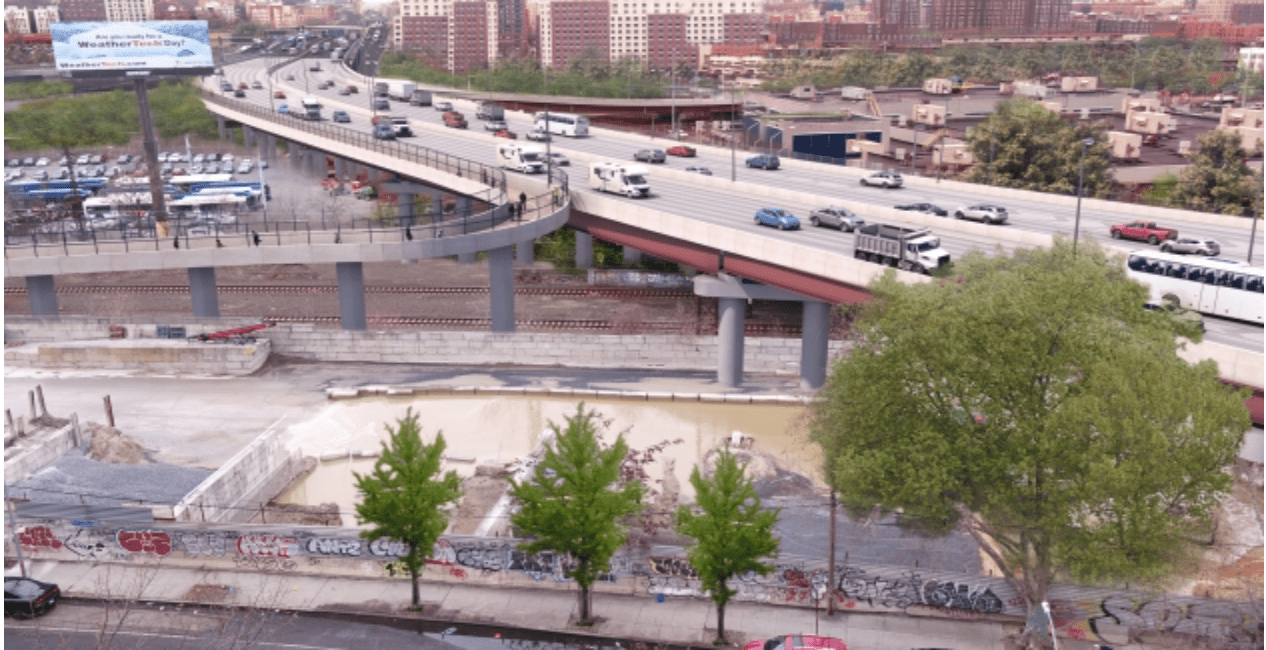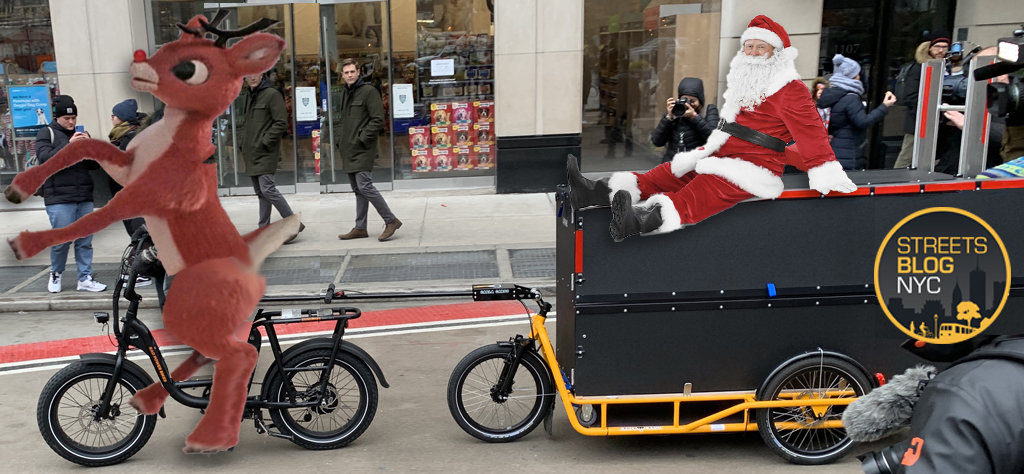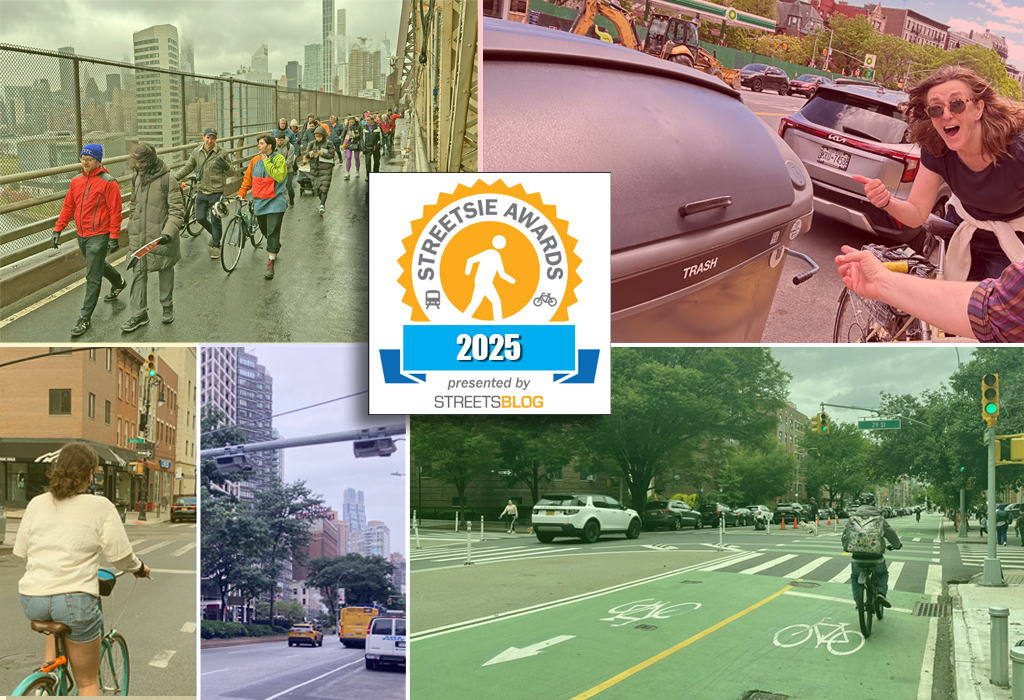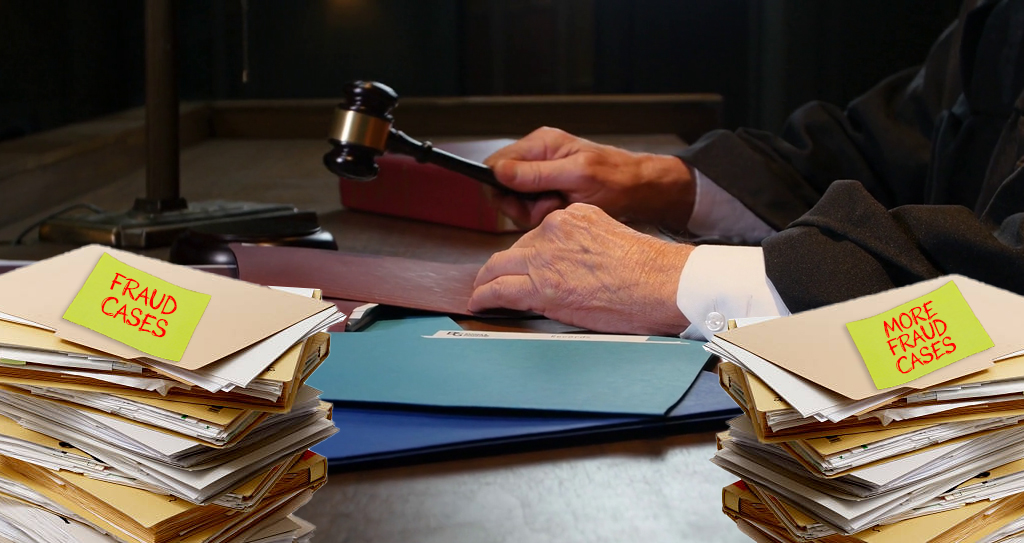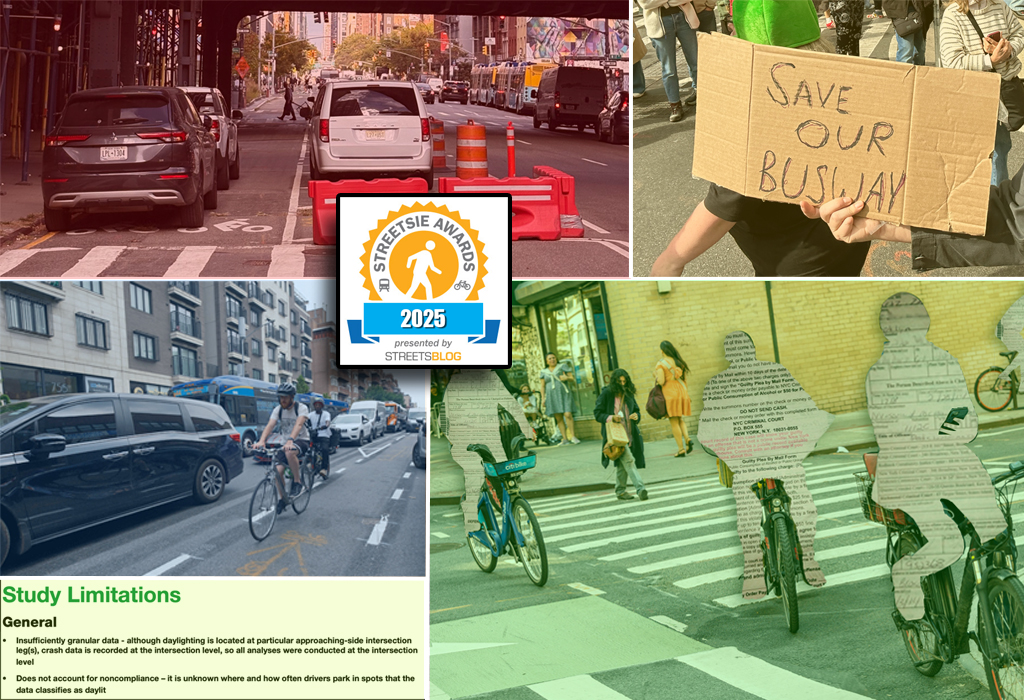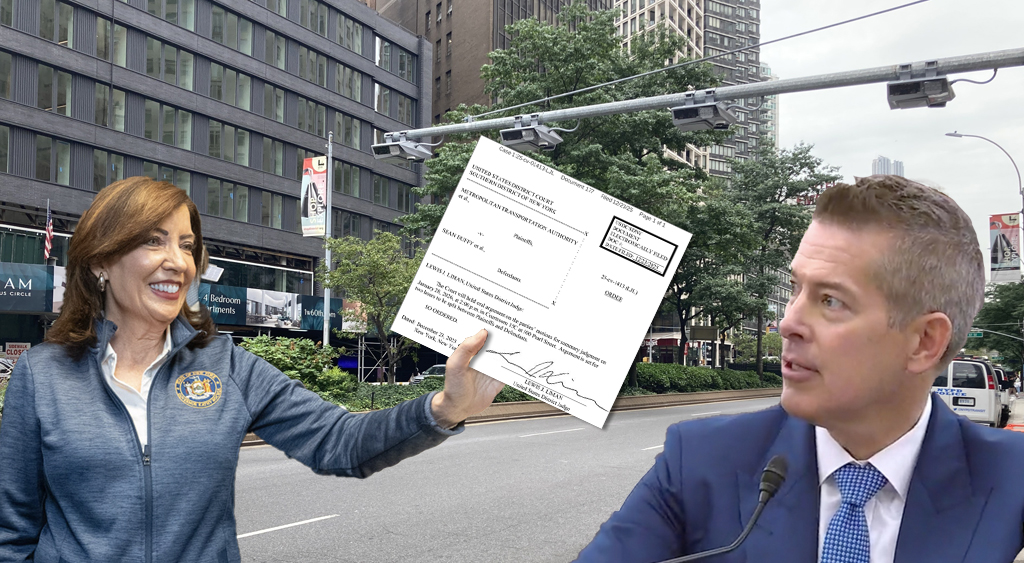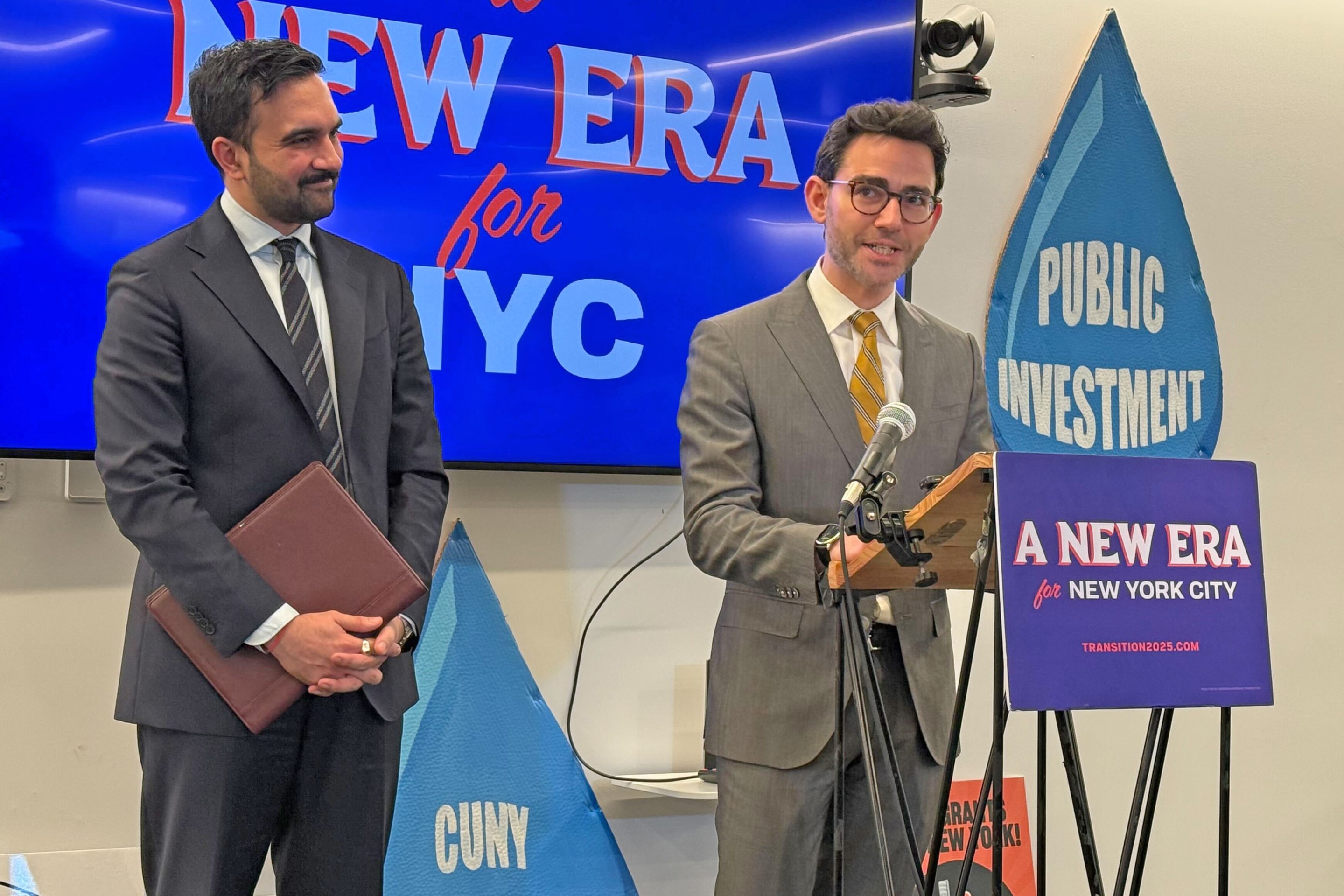The New York State Department of Transportation says it may not widen the Cross-Bronx Expressway by building a wide temporary roadway while repairs to the main road are made, instead unveiling a plan for a much smaller path, a new rendering on the project website shows.
The new shared use path next to the Cross Bronx would be an alternative to the massive "connector road" — a three-lane replacement highway for traffic — when state DOT knocks down and rebuilds five elevated sections of the aging highway.
The original proposal ginned up massive pushback from community organizations and elected officials, who sniffed out the so-called "multimodal community connector road" as a stealth highway widening, especially as the project appeared to be just one piece of the five-mile long expansion.
After the initial backlash to the project, state DOT offered up some other configurations of the connector road, including a bike and pedestrian-only version of the road, but activists still worried about the large steel-and-concrete structure, which would rise above a park and still carry highway traffic.
A rendering of the new path shows that it would run along the south side of the elevated piece of the Cross Bronx Expressway between Boston Road and Bronx River Avenue. The shared use path would be much smaller than the proposed connector road, more like a pedestrian and cyclist path on a bridge than than the highway-sized idea that state first pitched.
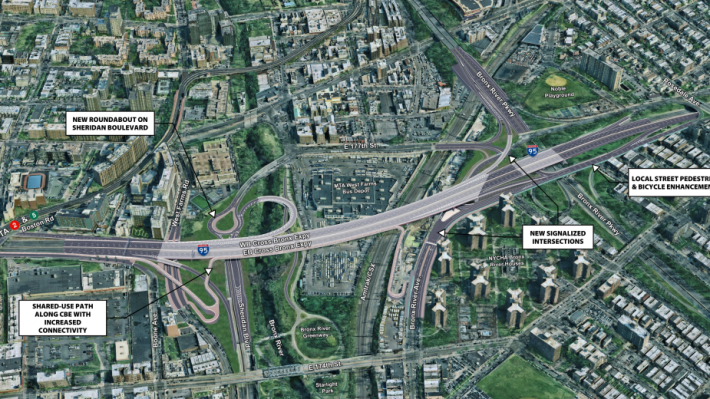
An option that doesn't involve a parallel road that carries highway traffic, but still creates some kind of new east-west connection in the neighborhood, had not initially been on the table. One Bronx environmental activist was cautiously optimistic that the worst parts of the highway repair could be on the way out.
"Our stance is against putting another roadway up, so we're glad there's another option," said Daniel Ranells, deputy director of programs for the Bronx River Alliance.
The state DOT still must undertake an environmental assessment for the entire highway repair project, but Ranells said there's a a victory in getting a shared use path on the table that won't be the size of a highway, even if it's right next to a highway.
"It's good in that it shows that [state DOT] heard us and that we've made enough cohesive arguments that this option is going to be in the environmental assessment. Though it would be horrible, because you'd be walking right next to the Cross Bronx," he said.
Other opponents of the connector road said the new proposal is proof that the state DOT had created a false choice.
"DOT insisted that the traffic diversion structure absolutely had to be built, and now they're being more responsive to the community and reality, and providing an explanation of all possibilities not just a build or no build," said Jaqi Cohen, the director of climate and equity policy at the Tri-State Transportation Campaign.
A spokesperson for the state DOT said that the decision on which version of the project goes forward will be determined by public input and the upcoming environmental assessment, which is supposed to be released in the spring of this year.
"Each option will be evaluated based on several factors, including the potential social, economic, and environmental effects," said New York State DOT spokesperson Glenn Blain. "The New York State Department of Transportation is committed to robust community engagement at every step in the process and the selection of an alternative will be informed and guided by public input. The evaluation process will be documented in the Draft Design Report/Environmental Assessment (DR/EA), which will be released for public review and comment."
But Ranells and Cohen both said that they were still wondering if there were better things to do with $150 million in federal funding than either a highway expansion or a shared-use path on one of America's most notorious urban highways.
"Is there a demand for this shared use path in the first place? ... Will it be a waste of money when the money can be spent elsewhere? We're in a time where there will be little to no money on infrastructure money from the federal government, so we've been frustrated from the start because this is a lot of money to spend on something that we're not even sure people want," said Cohen.
For his part, Ranells said he wanted to see more of an effort to connect this repair project, and the federal money it's supposed to get, to the ongoing Reimagine the Cross Bronx project. The long-term goal of that plan has focused on capping some of the below-grade portions of the highway, but there are other short- and medium-term projects that the city and state are supposed to look at in addition to the more ambitious idea to cap the highway.
"Can we take some part of that money and put it towards green infrastructure and planting trees along the highway? Can we put a dedicated bus lane on the Cross Bronx? How can we make this racist, massive piece of infrastructure better serve the community that it's impacted for decades?" he asked.
